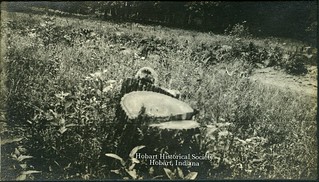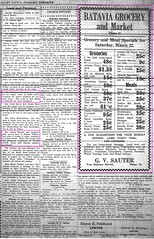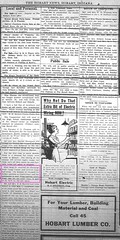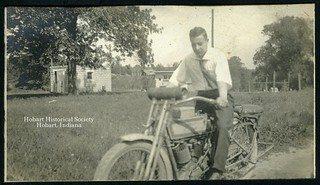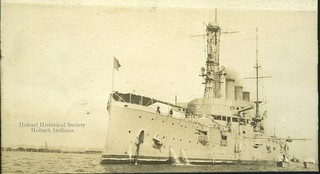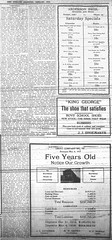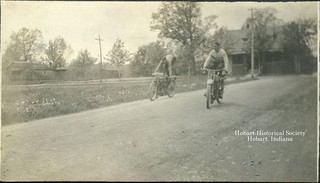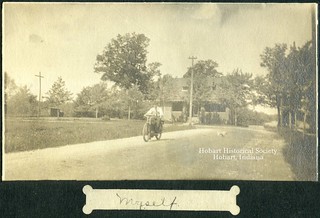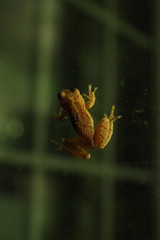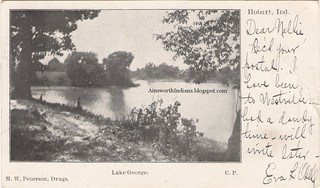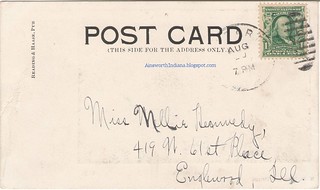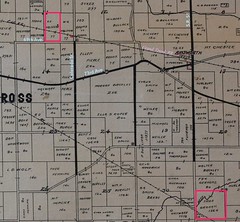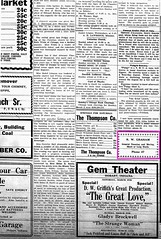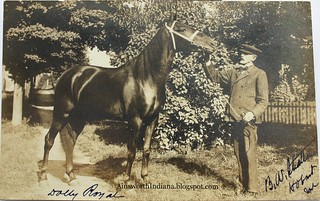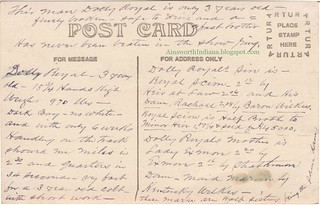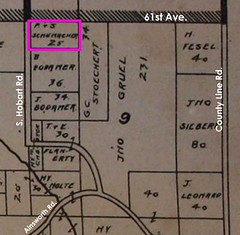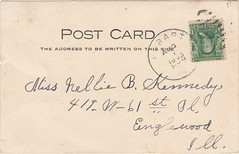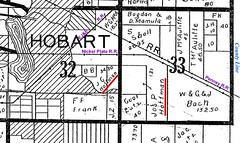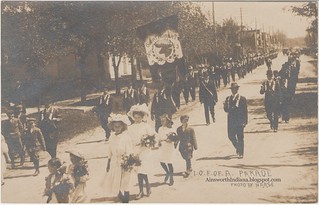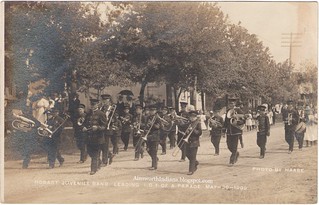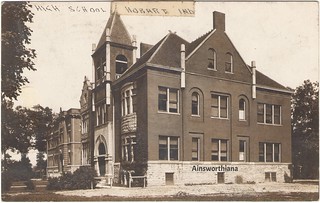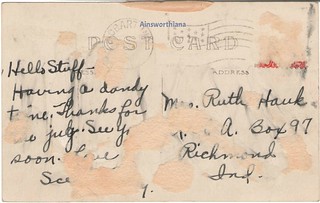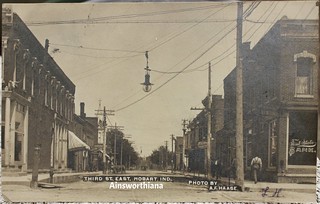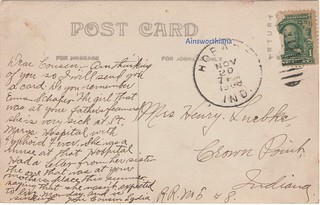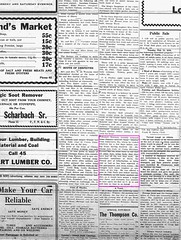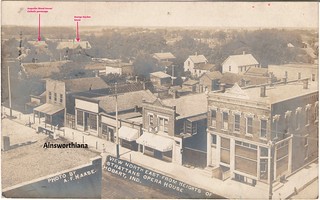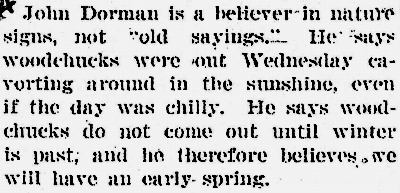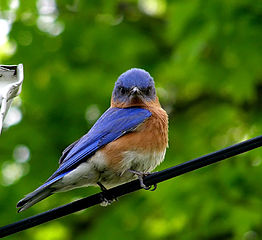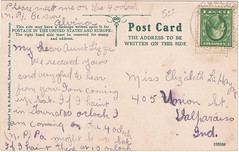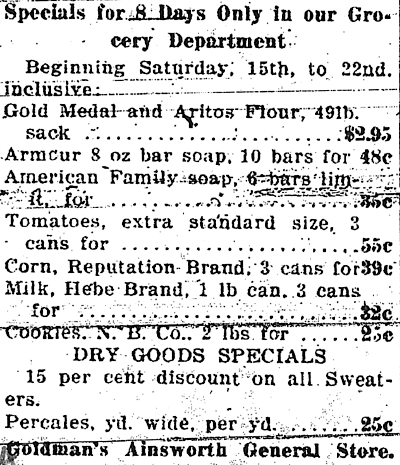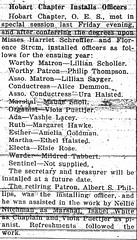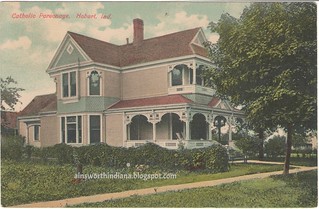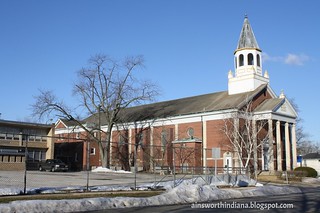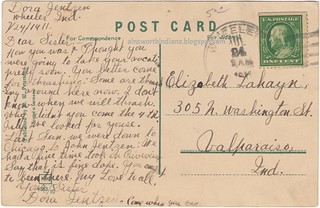Charles Maybaum might return to the farmhouse south of Ainsworth where he had spent
practically all his life, but he could never go home again, for his mother was gone.
Caroline Wagner Maybaum died on the morning of Friday, March 7, 1919, after some eight weeks' illness. She was 77 years old, the mother of 10 children, grandmother of 15 and great-grandmother of eight. She had come from Germany with her husband, Charles, in 1871. By 1891 they were settled on the Ainsworth farm, and there she spent the rest of her life.
Beyond that I know little about her. With so many children to raise, a farm household to run, and then grandchildren and great-grandchildren to help out with, she was no doubt a busy woman, but she spent her time quietly so far as the newspapers are concerned.
And now she sleeps in Crown Hill Cemetery beside her husband, who
preceded her in death.
Their eldest son, August, was appointed executor of the estate. Roscoe Peddicord acted as his attorney.
♦ ♦ ♦In looking over my notes on the Maybaums, I realize that I was not fair in describing Charles Jr. as "unadventurous." There are other ways of being adventurous besides moving out of your parents' house and marrying.
For example: a Charles Maybaum was elected Ross Township road supervisor in November 1902 — but I suppose that may have been Charles Sr.; the report did not specify. It was definitely Charles Jr. who was elected road supervisor in 1907. In 1911 he ran for re-election; this time he lost to Lee Hunter. He filed a petition to get on the ballot in 1914, but I don't know what happened in that election.
Charles Jr. was something of an inventor. In January 1903, the
Gazette reported: "Chas. Maybaum, Jr., near Ainsworth has invented an attachment to a thrashing machine, which he thinks of having patented. He also has another invention which promises to remunerate him handsomely." A month later he was seeking capital investors:
 (Click on image to enlarge)
(Click on image to enlarge)If anything came of these plans, I haven't heard about it, but the point is that he made the venture.
In the autumn of 1903 Charles Jr. left for Mississippi with two other Ainsworth men, Ed Mankey and Mike Foreman, "on a prospecting tour." A month later Charles Jr. was back with a new scheme: "I have returned from Mississippi and would be pleased to talk to anyone who wishes to know more about Mississippi farm land and a home for himself, or cheap rates he can get."
In 1908 Charles Jr. had a five-room house built, apparently as a rental property. I don't know for certain where it was — or perhaps he had two such houses, for he once refers to such a house in Ainsworth, and then again he offers for rent a five-room house on Water Street. In July 1918, he sold the Water Street house to William Thiede.
That is the summary of his public activities thus far. You can see why I want to retract the "unadventurous."
Sources:
♦ "Additional Local News." Hobart Gazette 16 Oct. 1914; 23 Apr. 1915; 26 July 1918.
♦ "Ainsworth." Hobart News 21 Dec. 1911.
♦ "Are You Interested?" Hobart Gazette 13 Feb. 1903.
♦ "Deaths for the Week." Hobart Gazette 14 Mar. 1919.
♦ "General News Items." Hobart Gazette 16 Jan. 1903; 20 Nov. 1903; 20 Dec. 1907.
♦ "Local Drifts." Hobart Gazette 20 Nov. 1908; 8 Dec. 1911; 30 Mar. 1917.
♦ "Mrs. Caroline Maybaum." Hobart News 13 Mar. 1919.
♦ "Notice of Administration." Hobart News 20 Mar. 1919.
♦ "Republicans Victorious." Hobart Gazette 7 Nov. 1902.
♦ "Road Supervisors Elected." Hobart Gazette 22 Dec. 1911.

